by Brooks Riley
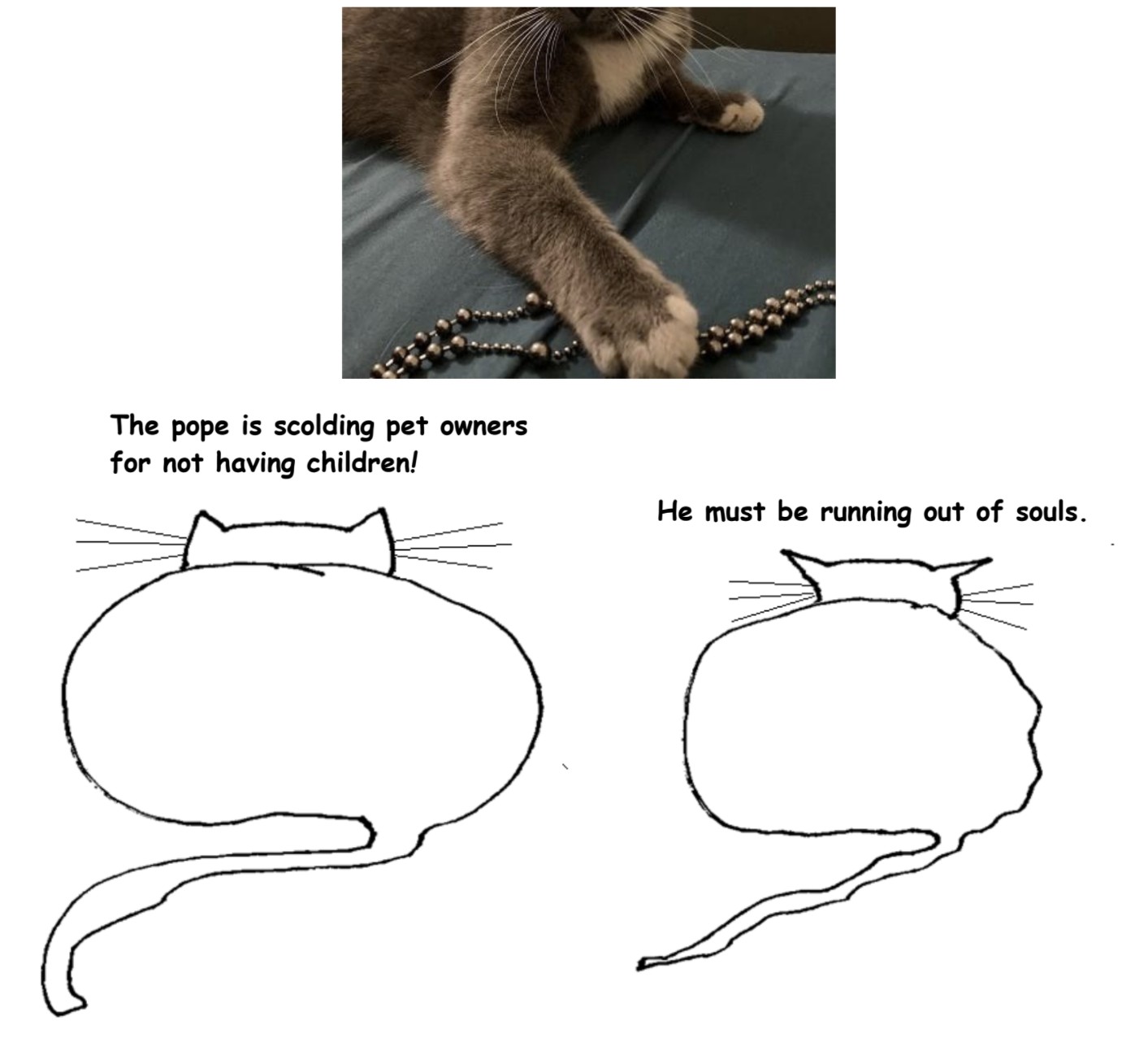
by Brooks Riley

by Dick Edelstein
In this last of four essays on historical memory, I consider some of the guises under which this topic arises in Spain, the conflicts that exist between the need to remember and the need to forget, and those that crop up when different groups appeal to the right to remember. I previously discussed the issue of public access to archival data on Spanish Civil War casualties and victims. For two decades Spain has been on the leading edge of a wave of concern over historical memory: how social groups and nations construct and identify with particular narratives about historical periods or events.
Following Franco’s death, the main Spanish political parties negotiated the Pacto del Olvido, an agreement that was formalized in the Ley de Amnistía, which freed political prisoners but also protected those who had committed crimes during the Civil War and the subsequent Francoist regime. In 2007, the Ley de Memoria Histórica provided a new legal framework for investigating the human rights violations that fell under the amnesty and for identifying individuals buried in unmarked mass graves. Some conservatives considered that this legislation violated the spirit of the earlier pact.
The governing Spanish Socialist Party is now providing funding for the activities covered by the Ley de Memoria Histórica, which had been blocked since 2011 by the right-wing Partido Popular. The government is also drafting a more ambitious act to deal with the legacy of the Civil War and the dictatorship. Its objectives include funding the exhumation and DNA identification of casualties and victims, investigating past crimes, and educating children about the Civil War. Read more »
by Derek Neal
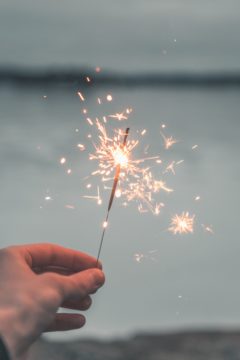
It’s the time of year end lists: Best Movies of 2021, Best TV Shows, Best Fiction. Unfortunately, I haven’t seen many movies that came out this past year, haven’t streamed many TV shows, haven’t read many books. I’m not saying I haven’t seen any movies, or watched any shows, or read any books—I have—just not many that were released this year, 2021. But really, outside of reviewers and critics, has anyone? The phenomenon of year end lists seems to me to be much more of a marketing and business endeavor than one based on actual artistic merit. And how can one keep up? There’s simply too much stuff out there, and I’ll never have the time to read and watch everything I’d like. The number of unread books on my shelf is rising, and I keep buying more. I don’t have much to say about this year, 2021, but a more interesting question to ask would be, “What’s the best of your 2021?” Not what was made this year, but what you discovered this year.
For me, I went on a New York mob movie kick—Carlito’s Way, Donnie Brasco, King of New York—that splintered out into other films like Jackie Brown, American Psycho, and L.A. Confidential. I read, mainly, books I picked up at used bookstores and used books sales on front lawns. I’ve found that the best way to alleviate an ever–increasing stack of books is not to make a list or plan but to walk into a store, or sale, and buy a book in a serendipitous fashion—maybe it’s an author you’ve been meaning to read but have never gotten around to, maybe the cover is interesting, or maybe you read the first page and are hooked. This works for me, as I can buy the book and read it right away. The trouble is buying just one book. Read more »
by N. Gabriel Martin

What did my friend mean when he told me that there was no such thing as a seagull? He didn’t mean that the aggressive bird that had stolen my chips didn’t exist, nor did he mean that it was something else, not a seagull. He meant that “seagull” isn’t the right word.
He went on to explain that there is no particular species called a seagull. What stole my chips on Brighton beach was a herring gull, which is different from the glaucous-winged gull I’d seen going after fries in Vancouver and the silver gulls that harass picknickers in Sydney.
Okay, fine. But he had no right to correct me. It was a seagull after all. Calling it a herring gull or even Larus argentatus would be no more or less correct than calling it what I’d called it. It wouldn’t even be any more precise.
He was insisting on a distinction that may well be significant for scientific purposes, but which may have obscured the perfectly true things I want to talk about when I talk about nuisance seabirds. Read more »
by Pranab Bardhan
All of the articles in this series can be found here.
 At ISI we were assigned statistical assistants who’d take our large data analysis jobs to the IBM computer at the Planning Commission, but for relatively small jobs they’d do the calculations themselves by furiously rotating the handles of the small Facit mechanical calculator they each had, you could literally hear the noise of ‘data crunching’. This was before electronic desk calculators came to Indian institutions. I remember buying a small Texas Instruments calculator in a short trip abroad and was quite impressed by its capacity; and I told TN that I did not need to learn the operation of Facit machines, which I saw him cranking all the time. (This reminds me of a British economist, Ivor Pearce, who told me that just before the War he used to work for an accounting firm where they had not yet heard of log tables; he said he finished the whole day’s work in just an hour by using the log table and read books in his office the rest of the time). Of course, I am told today our tiny laptops/smartphones contain computing capacity million times larger than the biggest IBM machines in India at that time.
At ISI we were assigned statistical assistants who’d take our large data analysis jobs to the IBM computer at the Planning Commission, but for relatively small jobs they’d do the calculations themselves by furiously rotating the handles of the small Facit mechanical calculator they each had, you could literally hear the noise of ‘data crunching’. This was before electronic desk calculators came to Indian institutions. I remember buying a small Texas Instruments calculator in a short trip abroad and was quite impressed by its capacity; and I told TN that I did not need to learn the operation of Facit machines, which I saw him cranking all the time. (This reminds me of a British economist, Ivor Pearce, who told me that just before the War he used to work for an accounting firm where they had not yet heard of log tables; he said he finished the whole day’s work in just an hour by using the log table and read books in his office the rest of the time). Of course, I am told today our tiny laptops/smartphones contain computing capacity million times larger than the biggest IBM machines in India at that time.
The statistical assistants at ISI were literally called ‘computers’ (I was a bit taken aback when on the first day a man came to see me and said “I am your computer, sir”). One day when I was chatting with this human ‘computer’, he said some years back he had worked with a foreign professor who was rather short-tempered and used to scream at him for the slightest delay or lapse. (It so happened that I knew this professor). I said he should have protested if the professor was unnecessarily rude. He gave me a sneaky smile and said that he and other ‘computers’ had taken their ‘revenge’ on that guy. When I asked how, he said they used to mess up his calculations without the professor knowing about it. I was aghast (and also made a mental note not to trust his data analysis of that period). This was an example of what Jim Scott, the political scientist, has called ‘weapons of the weak’ in his eponymous book; many decades earlier the famous Czech novel ‘Good Soldier Švejk’ had satirical accounts of passive-subversive resistance of military authorities by the soldier. Read more »
Sam Kahn at 3:AM Magazine:
 The presumption is that art must shock—that the violation of taboo is what gives art its charge; and that, actually, shock and the overturning of societal norms is art’s highest purpose.
The presumption is that art must shock—that the violation of taboo is what gives art its charge; and that, actually, shock and the overturning of societal norms is art’s highest purpose.
Art-as-subversion runs very deep, of course. If in Greco-Roman art it’s sometimes hard to catch the subversive notes, art was considered insidious enough that Plato, within a chapter of designing his ideal state in The Republic, was discarding whole poetic genres and musical scales for being too politically dangerous. But somewhere in the 19th century the notion develops that a work of art can be most effective when it’s ugly, when it deeply mirrors certain social realities and presents them in such a way that the audience is spurred to immediate action. Napoleon praised The Marriage of Figaro for instigating the French Revolution and Lincoln credited Harriet Beecher Stowe with the Civil War.
More here.
James Goodwin in Literary Hub:
 In 1963, as the Beach Boys were playing on the radio and Christmas was approaching, two California schoolboys threw a coin. They were deciding who would be the guinea pig in a school science project they had designed—to beat the world record for staying awake. The lucky “winner” was Randy Gardner, a 16-year-old from San Diego. When the experiment was over, he had stayed awake for eleven days and twenty five minutes. It yielded some fundamentally important observations, fortunately recorded by William Dement, one of America’s few sleep researchers at the time. Nearly forty years later, Gardner still holds the world record—which is unlikely to be broken, as the Guinness World Records will no longer accept entries. Why? It is much too dangerous for the brain.
In 1963, as the Beach Boys were playing on the radio and Christmas was approaching, two California schoolboys threw a coin. They were deciding who would be the guinea pig in a school science project they had designed—to beat the world record for staying awake. The lucky “winner” was Randy Gardner, a 16-year-old from San Diego. When the experiment was over, he had stayed awake for eleven days and twenty five minutes. It yielded some fundamentally important observations, fortunately recorded by William Dement, one of America’s few sleep researchers at the time. Nearly forty years later, Gardner still holds the world record—which is unlikely to be broken, as the Guinness World Records will no longer accept entries. Why? It is much too dangerous for the brain.
There is no more intractable health problem in modern life than sleeplessness. Insomnia, difficulty sleeping and sleep disorders are all prevalent in today’s world. It is as if we are all in some ghastly sleep deprivation experiment. Shift work, long commuting hours, caffeine, stress, social life, travel, technology and, as we get older, age-related changes all influence our sleeping habits.
More here.
Richard Haass in Project Syndicate:
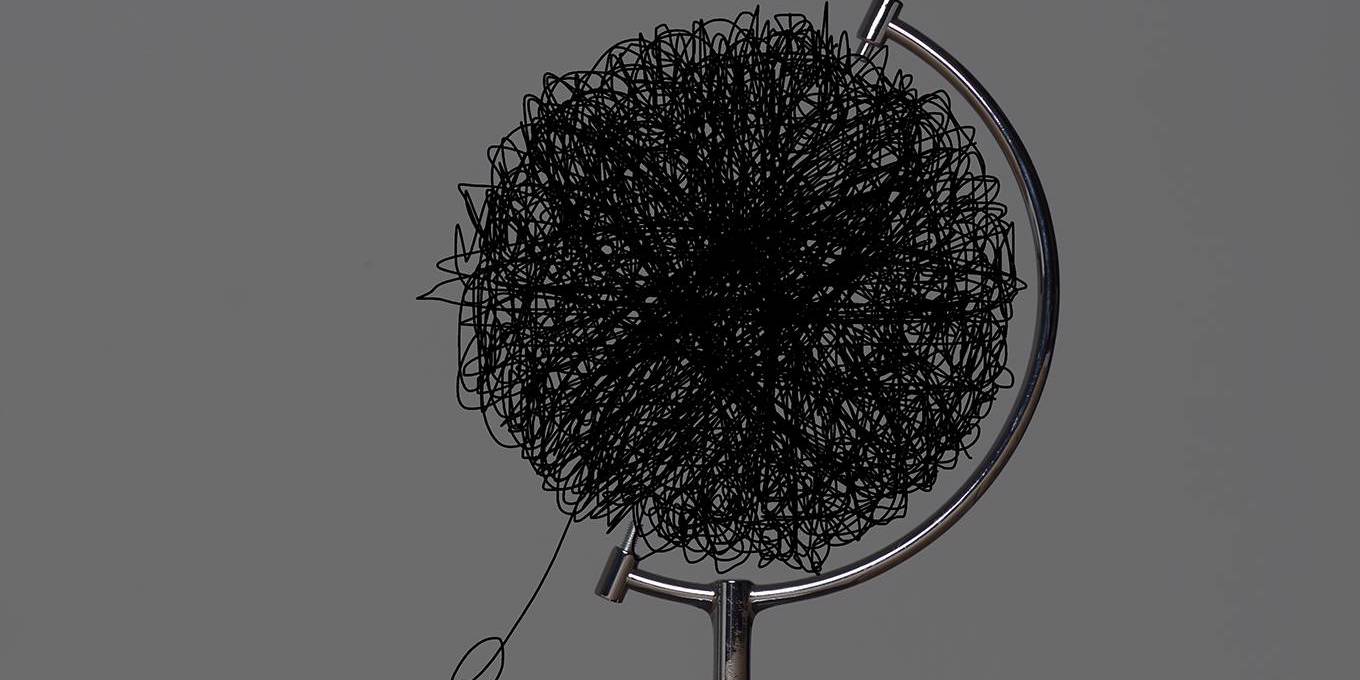 My book, A World in Disarray, was published five years ago this month. The book’s thesis was that the Cold War’s end did not usher in an era of greater stability, security, and peace, as many expected. Instead, what emerged was a world in which conflict was much more prevalent than cooperation.
My book, A World in Disarray, was published five years ago this month. The book’s thesis was that the Cold War’s end did not usher in an era of greater stability, security, and peace, as many expected. Instead, what emerged was a world in which conflict was much more prevalent than cooperation.
Some criticized the book at the time as being unduly negative and pessimistic. In retrospect, the book could have been criticized for its relative optimism. The world is a messier place than it was five years ago – and most trends are heading in the wrong direction.
At the global level, the gap between challenges and responses is large and growing. The COVID-19 pandemic exposed the inadequacies of international health machinery. We are entering the third year of the pandemic, but still do not know its origins, thanks to Chinese stonewalling.
More here.
Katha Pollitt in Dissent:
 The Right to Sex has to have the cleverest title on the women’s studies shelf since Roxane Gay’s Bad Feminist. It’s bold and provocative, even a little shocking: “OK,” it seems to say, “so they’re crazy, misogynistic, and dangerous—but are those incels on to something?”
The Right to Sex has to have the cleverest title on the women’s studies shelf since Roxane Gay’s Bad Feminist. It’s bold and provocative, even a little shocking: “OK,” it seems to say, “so they’re crazy, misogynistic, and dangerous—but are those incels on to something?”
Maybe just a little, Amia Srinivasan suggests in the essay collection’s title piece. When Elliot Rodger killed six people in Santa Barbara in 2014, he left behind a 107,000-word manuscript arguing that beautiful blond girls rejected him because he was half-Asian (not because, as Srinivasan notes, he was “a creep”), and therefore those girls deserved to die. To incels—young, “involuntarily celibate” men who rage against women for not wanting to date them—Rodger is a hero. From this rather alarming starting point, Srinivasan develops a fascinating challenge to rethink the commonplace view of sexual attraction as fixed and not open to critique. There’s a tension, she writes, in current feminism, which rails against fatphobia but also forbids interrogating women about their desires: “The important thing now, it is broadly thought, is to take women at their word. If a woman says she enjoys working in porn, or being paid to have sex with men, or engaging in rape fantasies, or wearing stilettos—and even that she doesn’t just enjoy those things but finds them emancipatory, part of her feminist praxis—then we are required, many feminists think, to trust her.” But, as she points out, women’s desires (as well as men’s) are shaped by social assumptions and prejudices—about race, ethnicity, weight, height, gender presentation, disability, and so on.
More here.
The Editorial Board in The Christian Science Monitor:
 Those venturing into space in 2022 have the moon in their eyes. Not that ferrying all sorts of people into orbit and suborbit will be abandoned. 2021 saw not only astronauts and scientists but also several tourists sent skyward for unmatched views of the big, blue marble that is Earth. They were young and old, women and men, various nationalities – even William Shatner, never a real spaceship captain but who played one on TV.
Those venturing into space in 2022 have the moon in their eyes. Not that ferrying all sorts of people into orbit and suborbit will be abandoned. 2021 saw not only astronauts and scientists but also several tourists sent skyward for unmatched views of the big, blue marble that is Earth. They were young and old, women and men, various nationalities – even William Shatner, never a real spaceship captain but who played one on TV.
Why the moon? Haven’t humans been there already? The truth is it’s an important steppingstone.
“Because the goal is Mars,” Bill Nelson, former U.S. senator and NASA’s new administrator, told The Guardian. “What we can do on the moon is learn how to exist and survive in that hostile environment and only be three or four days away from Earth before we venture out and are months and months from Earth.”
In 2022 Russia, India, Japan, and South Korea will join the United States in sending uncrewed missions to the lunar surface or into orbit around it. The Japanese lander will contain a rover built in the United Arab Emirates. China has big ambitions in space too, but right now they’re centered closer to Earth. An orbiting Chinese space station, Tiangong, may be finished and become fully operational this year, according to a U.S. intelligence report. With so much new activity planned in orbital space, by both governments and private enterprise, a need grows to update the 1967 Outer Space Treaty to maintain cooperation. A United Nations resolution passed last November calls for a working group to research new agreements. It will meet twice in 2022.
More here.
Anthony Lane in The New Yorker:
 The hero of “A Hero,” the new film from Asghar Farhadi, is a sign painter and calligrapher named Rahim (Amir Jadidi). As the story begins, he leaves prison and is driven up the wall. To be precise, up a cliff of pale rock, rich in elaborate carvings, northeast of the Iranian city of Shiraz. The cliff is the home of a necropolis, Naqsh-e Rostam, and Rahim finds it covered in scaffolding; climbing high, he greets his brother-in-law, the rotund and genial Hossein (Alireza Jahandideh), who is working at the site. The wind whistles gently around them, and Hossein brews tea, close to the tomb of Xerxes the Great, a Persian king who died almost two and a half thousand years ago. Rahim, by contrast, is on a furlough for two days, after which—not unlike Eddie Murphy in “48 Hrs.” (1982)—he must return to prison. Observing the scene, you feel dizzy at the doubleness of time. It expands and contracts, either stretching far into the distance or slamming shut.
The hero of “A Hero,” the new film from Asghar Farhadi, is a sign painter and calligrapher named Rahim (Amir Jadidi). As the story begins, he leaves prison and is driven up the wall. To be precise, up a cliff of pale rock, rich in elaborate carvings, northeast of the Iranian city of Shiraz. The cliff is the home of a necropolis, Naqsh-e Rostam, and Rahim finds it covered in scaffolding; climbing high, he greets his brother-in-law, the rotund and genial Hossein (Alireza Jahandideh), who is working at the site. The wind whistles gently around them, and Hossein brews tea, close to the tomb of Xerxes the Great, a Persian king who died almost two and a half thousand years ago. Rahim, by contrast, is on a furlough for two days, after which—not unlike Eddie Murphy in “48 Hrs.” (1982)—he must return to prison. Observing the scene, you feel dizzy at the doubleness of time. It expands and contracts, either stretching far into the distance or slamming shut.
Something else, however, makes you no less uneasy, and that is Rahim’s smile. It looks friendly and generous, but it’s also weirdly weak, and it can fade like breath off a mirror. This is clever casting on Farhadi’s part; we warm to Rahim’s crestfallen charm, and instinctively feel him to be down on his luck, yet we don’t entirely trust him, and the film proceeds to back our initial hunch. What led to his incarceration was an unpaid debt. His creditor, Bahram (Mohsen Tanabandeh), is grave, dour, and disinclined to forgive, despite being related to Rahim by marriage. (Just to thicken the mood, Bahram is a dead ringer for the Mandy Patinkin character, Saul, in “Homeland.”) “I was fooled once by his hangdog look, that’s enough,” Bahram says of Rahim, and we can’t help wondering, Could the dog be fooling us as well?
Anyone who has seen Farhadi’s earlier films, such as “About Elly” (2009) and “A Separation” (2011), will know how cunningly he doles out information, piece by piece. Thus, in the new movie, we gradually realize that Rahim has an ex-wife; that she will soon be married to someone else; that, while he’s been locked up, his sister Mali (Maryam Shahdaei) has been caring for his son, a shy kid with a stutter; that Farkhondeh (Sahar Goldust), a young woman beloved of Rahim, is the boy’s speech therapist; and so on. These things are true, but they are hard to cling to, because they are bundled up with things that are not necessarily true—secrets and lies, in which Rahim is all too quick to acquiesce. And the bundling only gets worse.
More here.
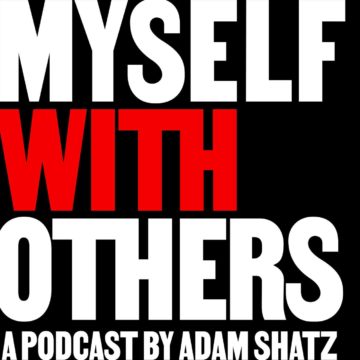 Over at the podcast Myself With Others:
Over at the podcast Myself With Others:
Alain Gresh, a French journalist, was the editor of Le Monde Diplomatique and is now the director of Orient XXI, an online journal about Middle East affairs. Gresh’s writing on Israel-Palestine and on the battles over Islam and secularism have made him one of the most important voices on the left in France. Born in Cairo in 1948, Gresh learned in his late 20s that a man he knew in Paris as a family friend, the Egyptian-Jewish revolutionary exile Henri Curiel, was his biological father. In 1978, Curiel was assassinated in his apartment building – a crime that remains unresolved to this day. In our conversation, Gresh talked to me about his trajectory as a radical commentator on the Middle East, his upbringing in Egypt on the eve of decolonization, his relationship to Curiel, and his ongoing search for the truth about Curiel’s murder.
More here.
 Suzanne Schneider in Late Light:
Suzanne Schneider in Late Light:
For a word so laden with meaning, promise is a remarkably slippery term to define. A promise is a guarantee of sorts, but also one that can be broken, as in the child’s frequent retort—“But you promised!”—when the hoped for proves untenable. In a different register, promise is also possibility, potential, a little ray of light in the dark surround. “That sounds promising,” as the expression goes. Far from being compatible, these two deployments of promise pull in contradictory directions, not just semantically, but ethically and politically as well. One denotes entitlement rooted in the past; the other gestures at a hope that resides in a future still undetermined. Can we retain the possibility of promise without regarding anything as promised?
The tension between these different iterations of promise looms large within Barack Obama’s best-selling presidential memoir, A Promised Land. This is not the forum to dwell at length on the book’s 900 pages or to revisit the momentous events that punctuated Obama’s tenure. My questions are of a somewhat different nature. What does it mean to call America a promised land or, alternately—in George Washington’s preferred formulation—a land of promise? What does recourse to this trope indicate about Obama’s much-touted idealism and optimism, and the ways in which contemporary liberals more broadly reconcile the undisputed horrors of the past with the prospect of a better future?
Beyond score settling and narrative making, the presidential memoir reads like an attempt to peddle a particular mode of optimism well beyond its sell-by date. No doubt critics who bill themselves realists will find much here that incriminates not merely the former president or liberalism as a political philosophy, but idealism in any form. Most major outlets have published reviews of A Promised Land, and many of them laud Obama for heroically maintaining his optimism even after gnashing his teeth against the cold, hard realities of “The World as It Is”—the title of part five of the book—daring to assert, four years after the election of Donald J. Trump to the nation’s highest office, that he still believes in “the idea of America.”
More here.
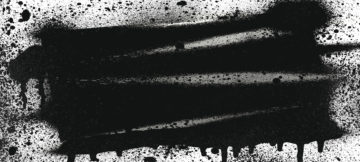 Eduardo Peñalver in The Chronicle of Higher Education:
Eduardo Peñalver in The Chronicle of Higher Education:
The Columbia University linguist John McWhorter is the kind of thinker who is difficult to pigeonhole. A critic of applying contemporary values to historical figures, he nonetheless endorses renaming buildings and schools honoring Woodrow Wilson because of Wilson’s exceptional racism (even by the standards of his own time).
McWhorter is nothing if not an independent thinker. Progressives will be tempted to ignore his newest book, Woke Racism: How a New Religion Has Betrayed Black America, not least for its intentionally provocative title and slapdash style of argument. But the attention the book is receiving in venues like NPR and The New York Times (where McWhorter writes opinion pieces) suggests a growing uneasiness with the prevailing state of discourse on race and structural racism in left-leaning circles.
Specifically, heeding McWhorter’s call for an approach to those topics that moves beyond judgment and condemnation, one that makes room for grace and forgiveness, could do much to lower the temperature and allow for more productive conversations about where we go from here. Unfortunately, the book itself does little to model the kind of intellectually charitable engagement that our society urgently needs.
More here.
Shirley Li in The Atlantic:
 Maggie Gyllenhaal has a theory that the mothers we see on-screen tend to fall into one of two categories. First, there’s the “fantasy mother,” who’s perfect in every way except when she has, say, some oatmeal on her sweater or runs a little late for a parent-teacher conference. On the flip side is the “monstrous mother,” who either mistreats her children or struggles with emotions that stifle her ability to parent; her story arc builds toward making her more palatable to viewers. Many films that attempt to rehabilitate an imperfect mother, such as Woman Under the Influence and Terms of Endearment, have been directed by great artists, and these characters have been played by great actors. And yet, Gyllenhaal told me over Zoom last month, with such movies, “you’re basically watching the destruction of this powerful life force.”
Maggie Gyllenhaal has a theory that the mothers we see on-screen tend to fall into one of two categories. First, there’s the “fantasy mother,” who’s perfect in every way except when she has, say, some oatmeal on her sweater or runs a little late for a parent-teacher conference. On the flip side is the “monstrous mother,” who either mistreats her children or struggles with emotions that stifle her ability to parent; her story arc builds toward making her more palatable to viewers. Many films that attempt to rehabilitate an imperfect mother, such as Woman Under the Influence and Terms of Endearment, have been directed by great artists, and these characters have been played by great actors. And yet, Gyllenhaal told me over Zoom last month, with such movies, “you’re basically watching the destruction of this powerful life force.”
The Lost Daughter, Gyllenhaal’s first film as a writer-director, rejects this binary. The movie, based on Elena Ferrante’s novel and now streaming on Netflix, follows Leda, a middle-aged divorcée who abandoned her two daughters for three years when they were children. Her story is not an easy one to take in. On a solo vacation, Leda (played by Olivia Colman) becomes obsessed with a young mother and her child and—for reasons even she doesn’t understand—steals the girl’s beloved doll, upending the pair’s relationship. The novel “disturbed” Gyllenhaal when she first read it, but she resisted the urge to judge the character at its center. Instead, she probed a provocative assertion that Leda makes—“I’m an unnatural mother”—to create a film that challenges Hollywood’s frustratingly limiting portrayals of parenthood. “That’s a really brilliant line in the book, because what does that mean?” Gyllenhaal said. “What’s an unnatural mother? But really, the question that it’s asking is ‘What’s a natural mother?’”
More here.
Sponsored content from Nature:
 If a single medical objective could be applied to the entire range of cancers, it would be detecting the disease as soon as possible. “At the highest level, finding any cancer early gives you the opportunity for curative treatments,” says Andrea Ferris, CEO of research funding organization, LUNGevity.
If a single medical objective could be applied to the entire range of cancers, it would be detecting the disease as soon as possible. “At the highest level, finding any cancer early gives you the opportunity for curative treatments,” says Andrea Ferris, CEO of research funding organization, LUNGevity.
…It’s not easy to find tumors at early stages. “They’re small and, in most cases, they’re not causing any systemic effect,” explains Michael Morrissey, global head, early detection & data science, Lung Cancer Initiative at Johnson & Johnson. No symptoms mean the person doesn’t seek help for the growing tumor. “This makes screening programs crucial,” Morrissey says. It’s not just solid tumors that can evade detection. When asked what hematologic cancers are the most difficult to detect, Mark Wildgust — vice president, global medical affairs, oncology, Janssen Pharmaceutical Companies of Johnson & Johnson — says, “Almost all of them.” For the rare bone-marrow malignancy AL amyloidosis, diagnosis can require multiple visits to physicians, often over a few years. Symptoms are non-specific and suggestive of heart or kidney failure. “It’s a hard diagnosis,” Wildgust says, “and delays in diagnosis result in the outcome of those patients getting worse.” Without effective treatment, the expected survival time is only about a year1.
Similar challenges arise in lung cancer: about 75% of patients are diagnosed at advanced stages (stage 3 or 4)2. “These cancers usually start deep in the lung tissue, giving enough time for a lesion to grow into a cancer that is difficult to treat,” Morrissey says.In general, the longer that a cancer develops, the more mutations it acquires, enabling it to evade treatment. “The tumor gets more heterogeneous,” says Wildgust. Plus, the evolving cancer can co-opt the patient’s immune system to help or hide the cancer instead of fighting it. Cancer screening is crucial to early detection, but even that healthcare tactic faces challenges. “You need to balance the effectiveness of screening with risk of false positives and false negatives,” says Wildgust. “The specificity is so important, and that’s a balancing act that we need to work towards.”
More here.